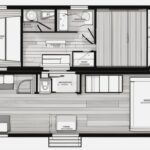Tiny house blueprints serve as the foundational roadmap for the entire construction process. They outline the design, layout, and structural details essential for building a functional and aesthetically pleasing tiny home. The meticulous planning and precision embedded in these blueprints are crucial in ensuring the successful execution of the construction project.
What You’ll Learn About Tiny House Blueprints
- Understanding the basics of tiny house blueprints and their role in construction.
- Design considerations, customization options, and working with professionals for blueprint creation.
- Cost considerations, DIY blueprint creation, and evaluating reliable blueprint sources.
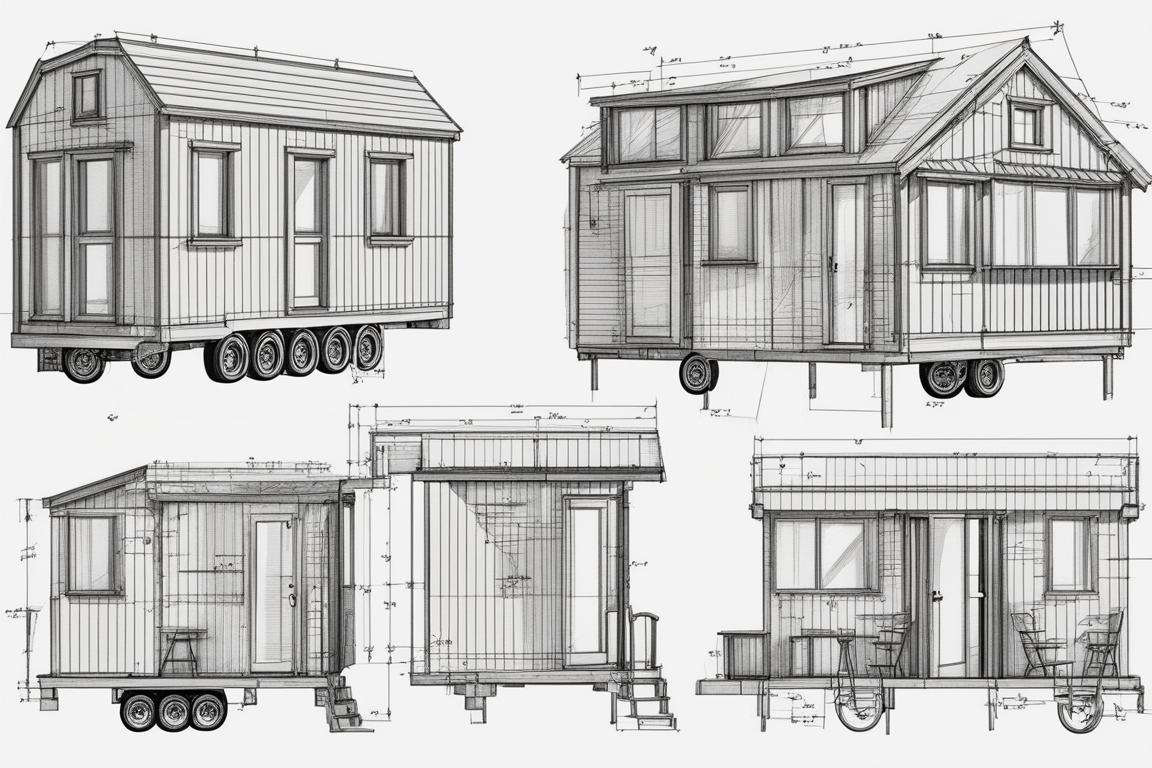
Understanding the Importance of Tiny House Blueprints
Tiny house blueprints are essential for guiding builders, contractors, and architects in translating ideas into tangible structures. They provide a visual representation of the proposed design, incorporating intricate details such as dimensions, materials, and spatial arrangements. Without a well-crafted blueprint, the construction process can encounter delays, errors, and inefficiencies.
Role of Blueprints in Tiny House Construction
Blueprints play a pivotal role in guiding builders, contractors, and architects in translating ideas into tangible structures. They provide a visual representation of the proposed design, incorporating intricate details such as dimensions, materials, and spatial arrangements. Without a well-crafted blueprint, the construction process can encounter delays, errors, and inefficiencies.
The Basics of Tiny House Blueprints
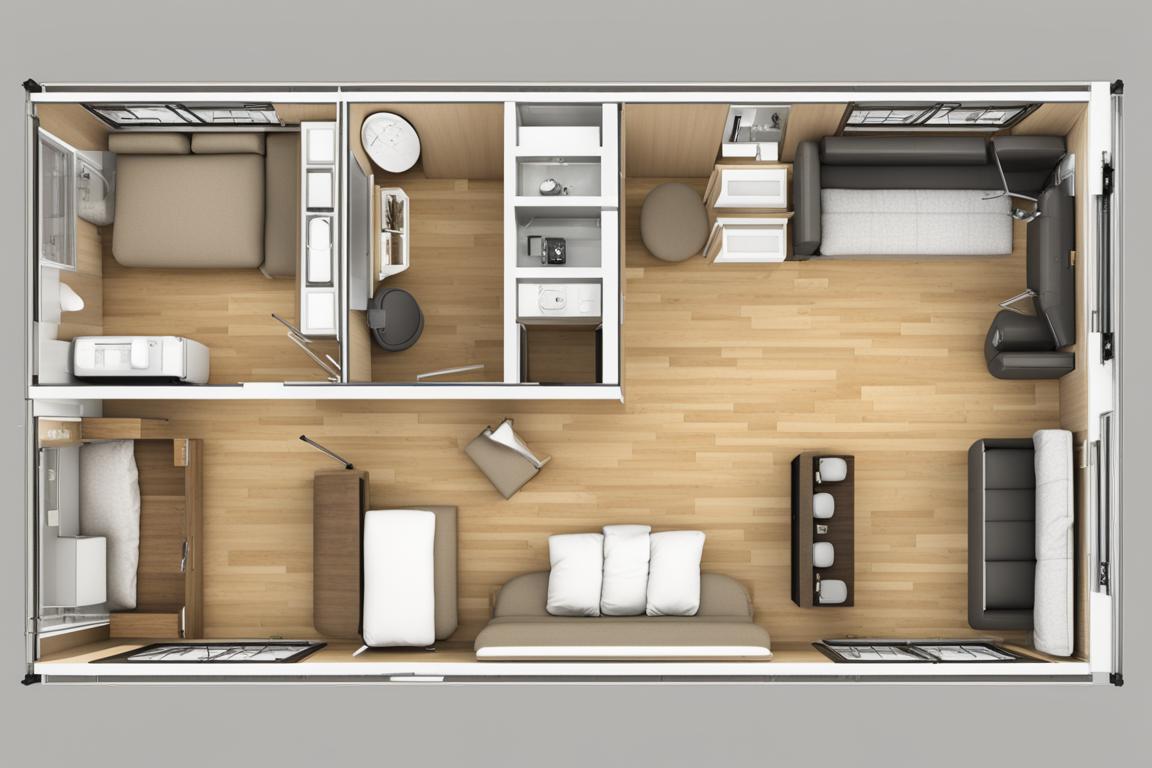
Exploring Floor Plans
The floor plan is a fundamental component of tiny house blueprints. It details the layout of the living space, including the arrangement of rooms, placement of furniture, and allocation of functional areas. As the core element of the blueprint, the floor plan influences the flow and functionality of the tiny house.
Understanding Elevation Drawings
Elevation drawings provide vertical perspectives of the tiny house, showcasing the exterior facades, window placements, and overall architectural aesthetics. These drawings offer essential insights into the visual appeal and external features of the tiny home.
Incorporating Construction Details
Tiny house blueprints encompass intricate construction details, encompassing structural elements, material specifications, and building techniques. These details are critical for ensuring the structural integrity and durability of the tiny house.
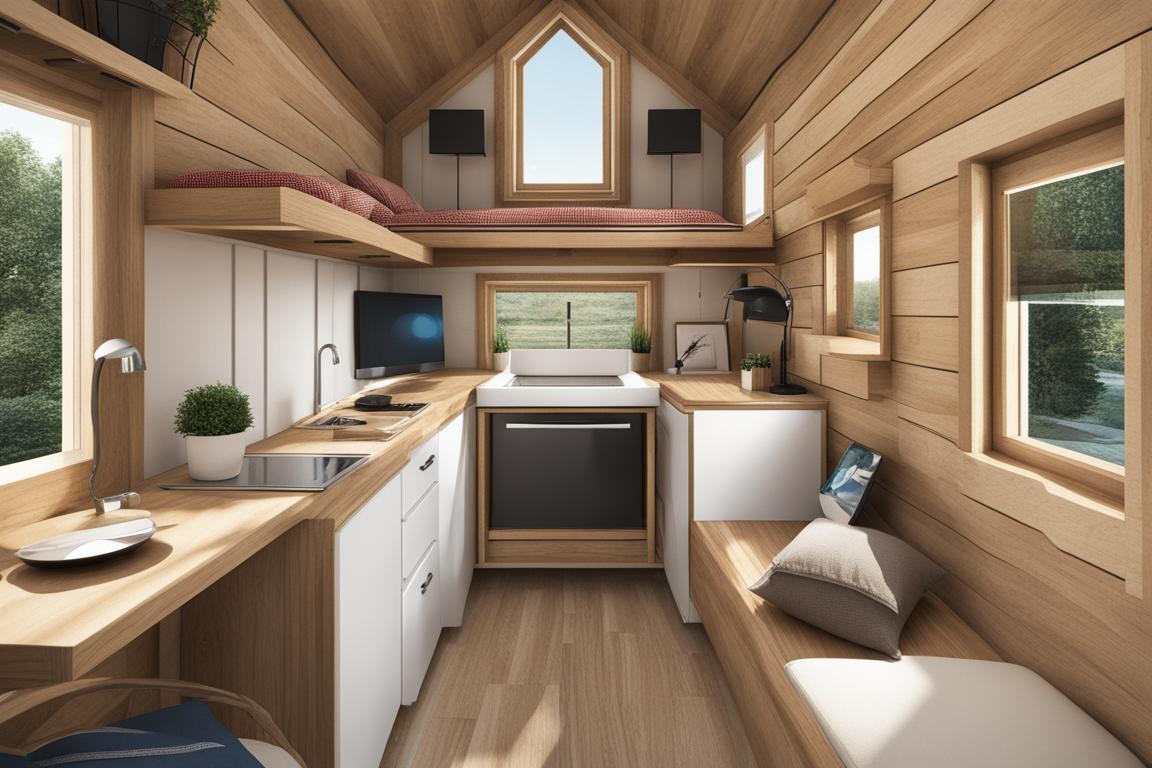
Design Considerations in Tiny House Blueprints
Maximizing Space Utilization
Efficient space utilization is a hallmark of well-designed tiny house blueprints. Every inch of the living area is carefully planned to serve multiple functions, ensuring that no space is wasted. Clever storage solutions, multi-purpose furniture, and innovative design concepts are integrated to maximize the utility of the compact space.
Optimizing Storage Solutions
Storage is a significant consideration in tiny house living. Blueprints incorporate ingenious storage solutions such as built-in cabinets, lofts, and concealed compartments to accommodate the essential belongings of the inhabitants while maintaining a clutter-free environment.
Ensuring Structural Integrity in Design
The structural integrity of a tiny house is a critical aspect addressed in the blueprints. Design considerations such as load-bearing capacity, foundation requirements, and weatherproofing are meticulously incorporated to ensure a safe and durable living space.
Customization Options and Flexibility in Tiny House Blueprints
Tailoring Designs to Lifestyle and Functional Needs
Tiny house blueprints offer remarkable flexibility in accommodating the unique lifestyle and functional preferences of the inhabitants. Customization options include personalized layouts, specialized areas for hobbies or work, and tailored features that reflect the specific needs of the occupants.
Incorporating Environmental Considerations and Sustainability
Blueprints can integrate environmentally conscious design elements such as energy-efficient systems, sustainable materials, and passive heating/cooling techniques, aligning with the principles of eco-friendly living and reducing the environmental footprint of the tiny home.
Personalizing Preferences and Aesthetics
From the choice of exterior finishes to interior décor, tiny house blueprints allow for personalization and aesthetic customization. The blueprint serves as a canvas for expressing individual style, ensuring that the tiny home reflects the unique tastes and preferences of its occupants.
Working with Professionals and Experts for Tiny House Blueprints
Importance of Architects or Designers in Blueprint Creation
Engaging experienced architects or designers is invaluable in the creation of comprehensive and well-optimized tiny house blueprints. Their expertise ensures that the design aligns with building codes, safety standards, and ergonomic principles, while also considering aesthetic and functional aspects.
Achieving Clarity in Communication and Collaboration
Effective communication between the blueprint creators and the future occupants is essential for capturing the desired vision and requirements. Collaborative discussions and clear documentation of preferences contribute to the development of tailored blueprints that resonate with the intended lifestyle.
Benefits and Advantages of Professional Guidance
Professional guidance not only ensures the technical accuracy of the blueprints but also brings forth innovative ideas, industry insights, and creative solutions that elevate the overall design and construction process.
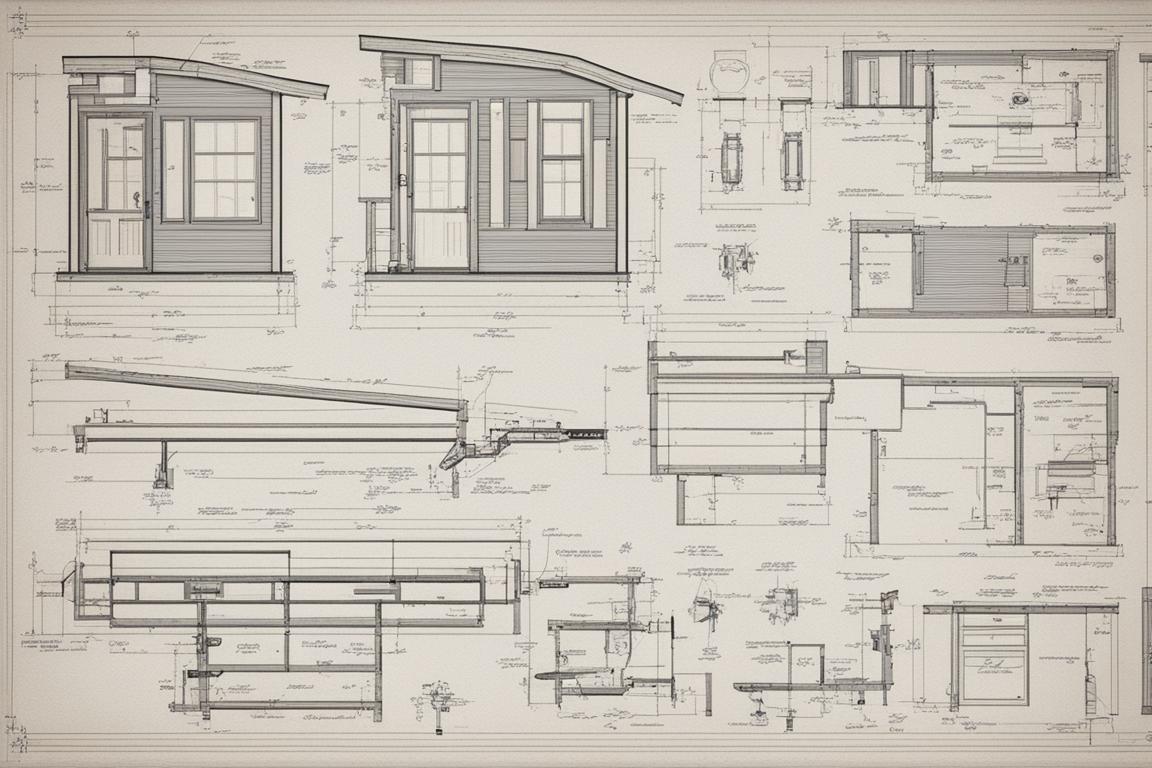
DIY Blueprint Creation for Tiny Houses
Utilizing Tools and Resources for DIY Blueprints
For individuals inclined towards a hands-on approach, various software tools and online resources are available for creating DIY tiny house blueprints. These tools offer user-friendly interfaces and design functionalities tailored to the specific requirements of tiny home construction.
Considerations for DIY Blueprint Development
DIY blueprint development demands a comprehensive understanding of building codes, structural requirements, and spatial design principles. Attention to detail and meticulous planning are crucial to ensuring the feasibility and practicality of the self-created blueprints.
Pros and Cons of Creating Own Blueprints
While DIY blueprint creation allows for personalized control and cost savings, it requires a significant time investment and expertise in architectural and construction fundamentals. Additionally, ensuring compliance with building regulations and industry standards is essential when opting for a DIY approach.
Understanding Building Codes, Regulations, and Zoning Laws
Adhering to Local Building Codes and Regulations
Tiny house blueprints must adhere to specific building codes and regulations enforced by local authorities. Compliance with these standards is essential for obtaining necessary permits and ensuring the safety and legality of the construction project.
Integrating Zoning Laws and Legal Requirements into Blueprints
Zoning laws dictate the permissible land use and construction parameters within a particular area. Blueprints need to align with these zoning regulations to prevent legal complications and ensure the lawful establishment of the tiny house.
Importance of Compliance and Permitting in Blueprint Development
Incorporating compliance measures and permit requirements into the blueprints streamlines the approval process and mitigates potential setbacks or delays during the construction phase.
Cost Considerations and Budgeting for Tiny House Blueprints
Professional Blueprint Costs and Budget Implications
Engaging professional architects or designers for blueprint creation incurs costs that should be factored into the overall construction budget. The complexity of the design, the level of customization, and the expertise of the professionals influence the blueprint costs.
Impact of Blueprint Costs on Overall Construction Expenses
While blueprint costs constitute a fraction of the total construction expenses, they significantly influence the design quality, material selection, and construction efficiency. Well-crafted blueprints contribute to cost optimization and streamlined construction processes.
Financial Planning and Resource Allocation
Careful financial planning should encompass blueprint costs, construction expenditures, and contingency reserves. Allocating resources judiciously ensures that the blueprint creation and subsequent construction proceed smoothly within the defined budget parameters.
| Topic | Description |
|---|---|
| Professional Blueprint Costs | Incurs costs that should be factored into the overall construction budget. |
| Impact of Blueprint Costs | Significantly influence the design quality, material selection, and construction efficiency. |
| Financial Planning and Resource Allocation | Should encompass blueprint costs, construction expenditures, and contingency reserves. |
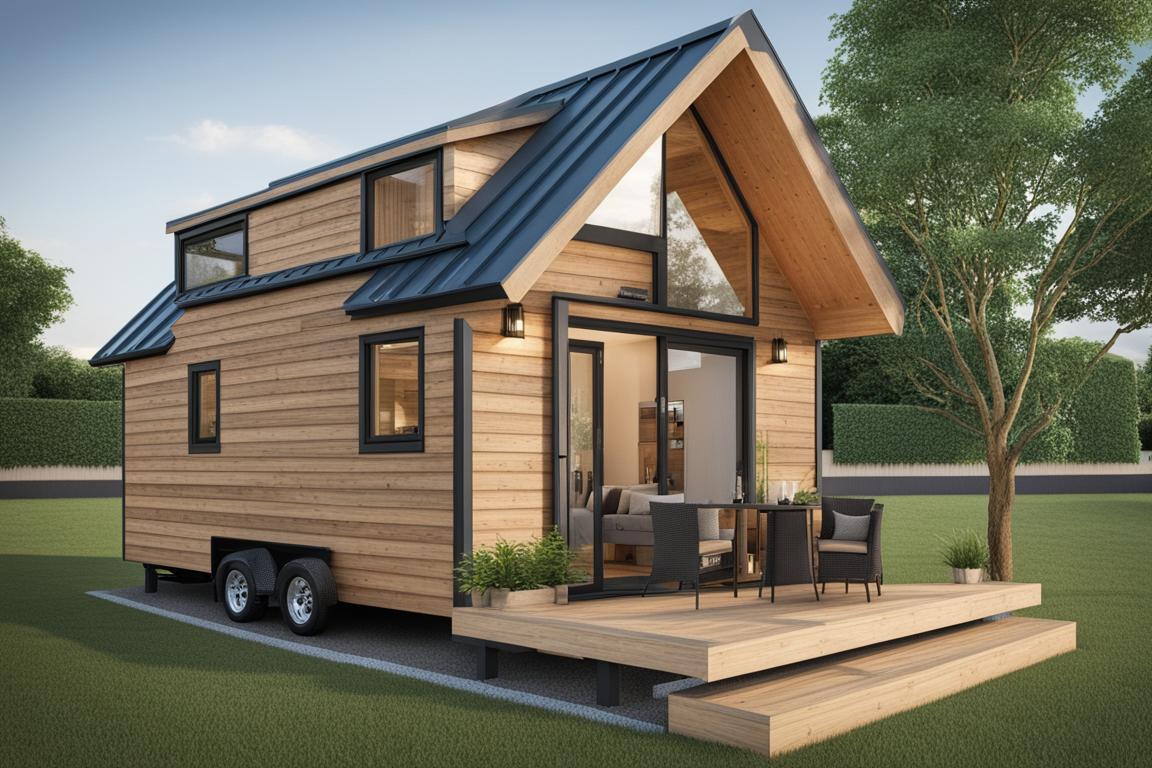
Case Studies and Real-life Examples of Tiny House Blueprints
Showcasing Real Blueprint Examples and Innovative Design Approaches
Exploring real-life tiny house blueprints showcases diverse design solutions, creative space utilization, and innovative architectural concepts. These case studies serve as a source of inspiration and practical insights for individuals embarking on their tiny house journey.
Exploring Layout Configurations and Space Utilization Strategies
In-depth analysis of blueprint examples reveals various layout configurations and space optimization strategies that address specific lifestyle needs and spatial constraints. Understanding these practical implementations enriches the blueprint development process.
Highlighting Successful Blueprint Implementations
Success stories of well-executed tiny house blueprints underscore the significance of meticulous planning, thoughtful design choices, and effective collaboration between blueprint creators and builders. These examples exemplify the transformative power of well-crafted blueprints in translating vision to reality.
Real-life Tiny House Blueprint Success Story
Finding the Perfect Blueprint Fit
As a young professional seeking a simpler lifestyle, Sara decided to build her own tiny house. However, she was overwhelmed by the process of creating the blueprints. After considering professional assistance, she stumbled upon a DIY blueprint tool recommended by a friend.
Sara initially doubted her ability to design the blueprints herself, but the user-friendly interface and helpful tutorials empowered her to craft a personalized layout that maximized space utilization and reflected her minimalist aesthetic. The ability to customize every detail allowed her to incorporate sustainable features and innovative storage solutions.
The successful construction and seamless integration of the blueprints into the build confirmed Sara’s satisfaction with her decision. Her story highlights the feasibility and advantages of DIY blueprint creation, demonstrating that with the right tools and resources, anyone can master tiny house blueprints to fit their lifestyle and preferences.
Identifying Reliable Blueprint Sources and Providers
Reputable Blueprint Sources and Platforms
Reputable platforms and providers offer a wide array of tiny house blueprints, catering to diverse design preferences and functional requirements. These sources serve as valuable repositories of design inspiration and professional expertise.
Factors to Consider When Choosing Blueprint Providers
When selecting blueprint providers, factors such as design versatility, professional credentials, customer reviews, and adherence to building standards should be carefully evaluated to ensure the suitability and reliability of the chosen blueprints.
Tips for Finding Designers and Blueprint Specialists
Engaging designers and blueprint specialists entails thorough research, portfolio assessments, and transparent communication to ascertain their proficiency in creating tailored, code-compliant, and aesthetically pleasing tiny house blueprints.
Evaluation Criteria for Tiny House Blueprints
Assessing Functionality and Practicality
Evaluating blueprints from a functional perspective involves scrutinizing the spatial efficiency, traffic flow, and ergonomic considerations to ensure that the design caters to the practical needs of the inhabitants.
Considering Aesthetics and Personal Preferences
Aesthetics play a significant role in blueprint evaluation, encompassing exterior appeal, interior ambiance, and cohesive design elements that align with the personal style and visual preferences of the occupants.
Feasibility for Construction and Customization
The feasibility of blueprint execution hinges on factors such as material availability, construction complexity, and adaptability to site-specific conditions. Assessing these aspects ensures that the chosen blueprint aligns with the construction capabilities and customization potential.
Finalizing and Preparing for Construction
Review, Approval, and Revision Process for Blueprints
Thorough review, approval, and potential revisions are integral stages in finalizing tiny house blueprints. Input from architects, engineers, and clients facilitates the refinement of the design to meet functional, regulatory, and aesthetic requirements.
Ensuring Accuracy and Attention to Detail in Final Blueprint
Precision and attention to detail in the final blueprint are paramount for a seamless construction process. Clarity in dimensions, material specifications, and structural details minimizes errors and discrepancies during the building phase.
Preparation and Planning for Construction Phase
Preparation for the construction phase involves organizing resources, coordinating with contractors, and securing necessary permits. A well-prepared blueprint serves as a roadmap for the subsequent construction activities, ensuring adherence to the intended design and quality standards.
Conclusion
Mastering tiny house blueprints demands a holistic understanding of design principles, construction requirements, and regulatory compliance. It involves meticulous planning, creative ingenuity, and collaborative efforts to craft blueprints that embody functionality, aesthetics, and sustainability. The significance of well-crafted blueprints in realizing the vision of a tiny house cannot be overstated. They form the cornerstone of the entire construction process, serving as the roadmap for materializing innovative design concepts into habitable living spaces.
With over a decade of experience in architecture and sustainable design, Emily Sullivan is a leading expert in tiny house construction and blueprint development. Holding a Master’s degree in Architecture from the University of California, Emily Sullivan has researched and implemented innovative design approaches for compact living spaces.
Emily Sullivan has contributed to several publications, including “Sustainable Living: Design Solutions for Small Spaces,” which delves into the importance of incorporating environmental considerations and sustainability in blueprint creation. Additionally, Emily Sullivan has collaborated with renowned architects and designers on real-life tiny house blueprint success stories, providing a unique blend of practical expertise and creative ingenuity.
As a member of the American Institute of Architects (AIA), Emily Sullivan stays abreast of the latest trends and regulations in the architectural industry, ensuring that their insights into building codes, zoning laws, and compliance requirements are both accurate and comprehensive. Their passion for maximizing space utilization and optimizing storage solutions has made Emily Sullivan a sought-after consultant for individuals seeking to embark on their own tiny house construction journey.
